Abstract
Aerosols of Mycoplasma pneumoniae were prepared at each of eight relative humidities between 0 and 85% and at five separate temperatures between 10 and 43 C. Survival of these organisms was found to be a function of both relative humidity and temperature. However, the temperature response was mediated by humidity in that the effects of temperature could be observed only if some water vapor was present. At all temperatures, survival of M. pneumoniae in aerosols was found to be best at the extremes of relative humidity. The effects of temperature were such that irrespective of relative humidity an increase in temperature resulted in a decreased airborne survival time.
Full text
PDF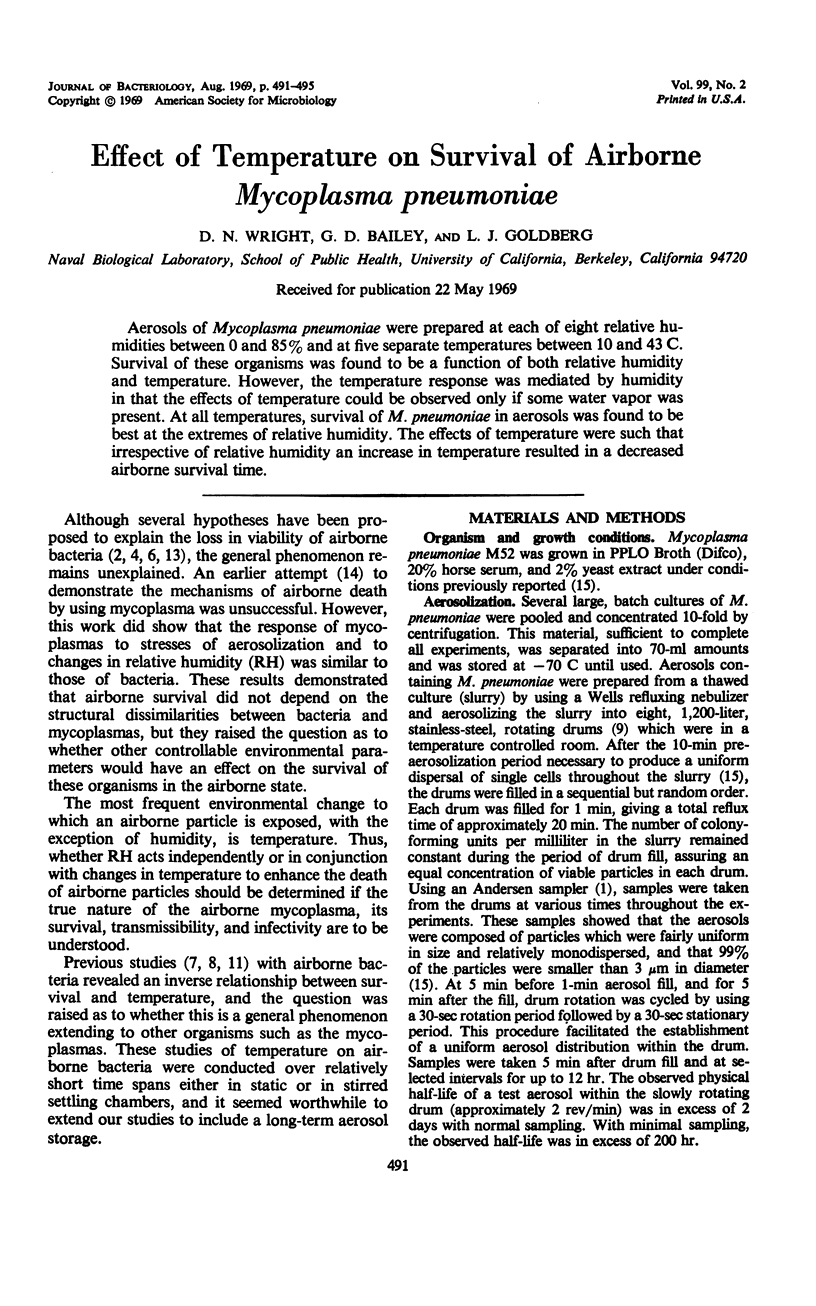
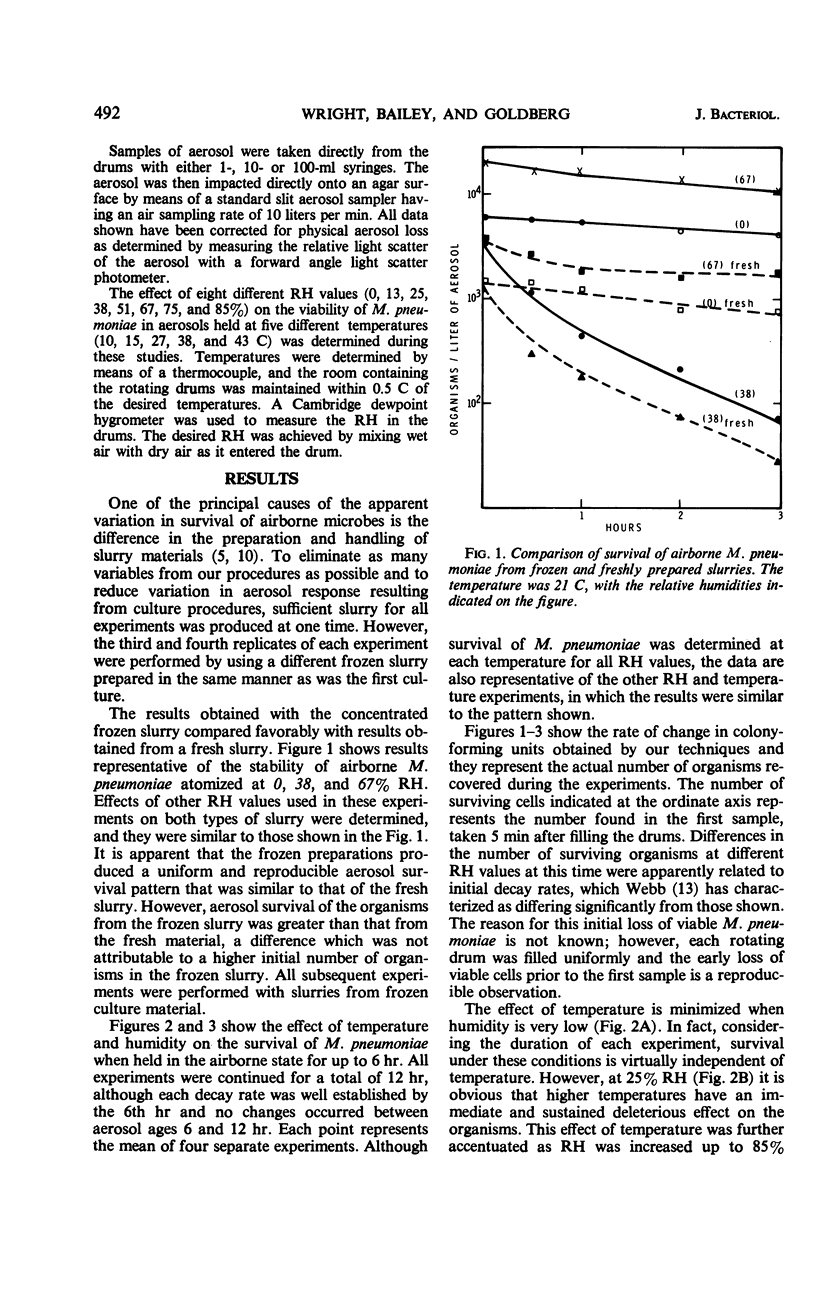
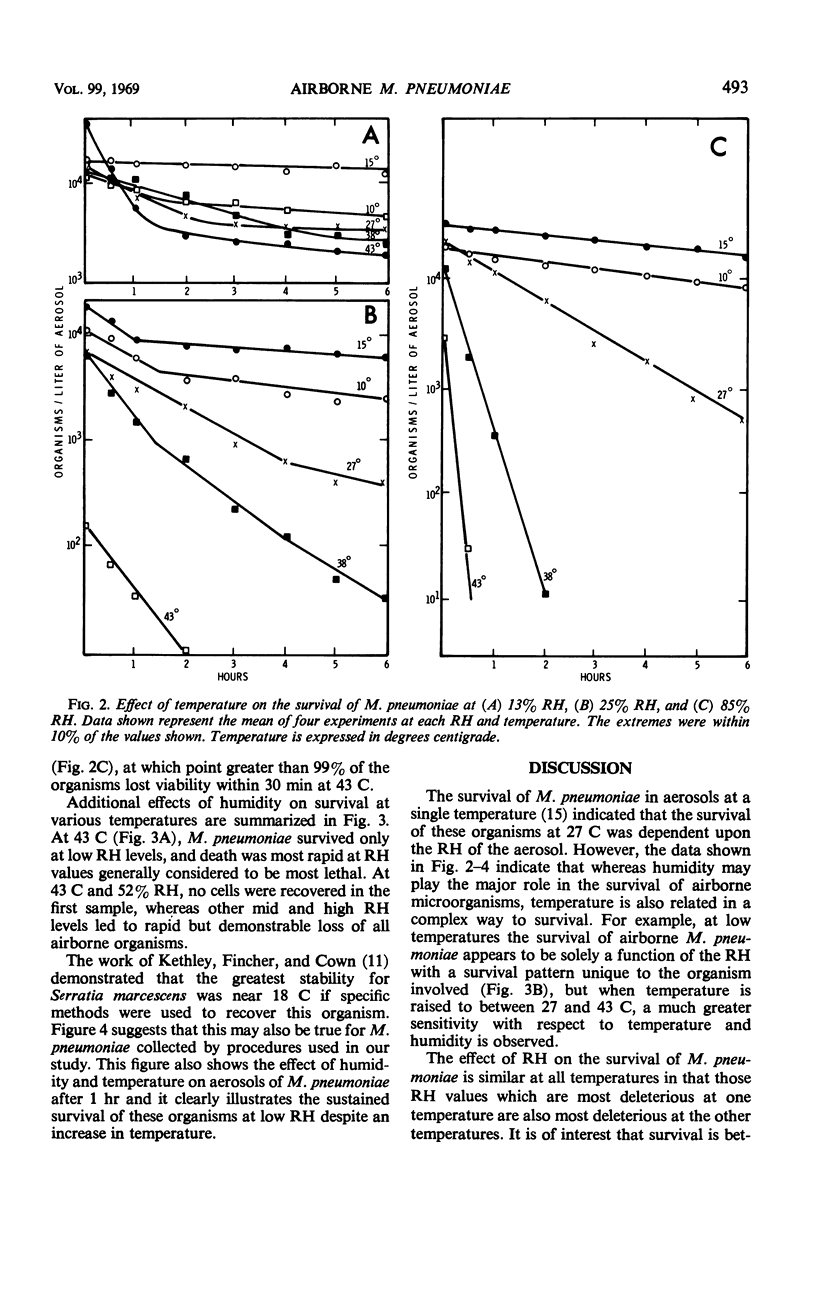
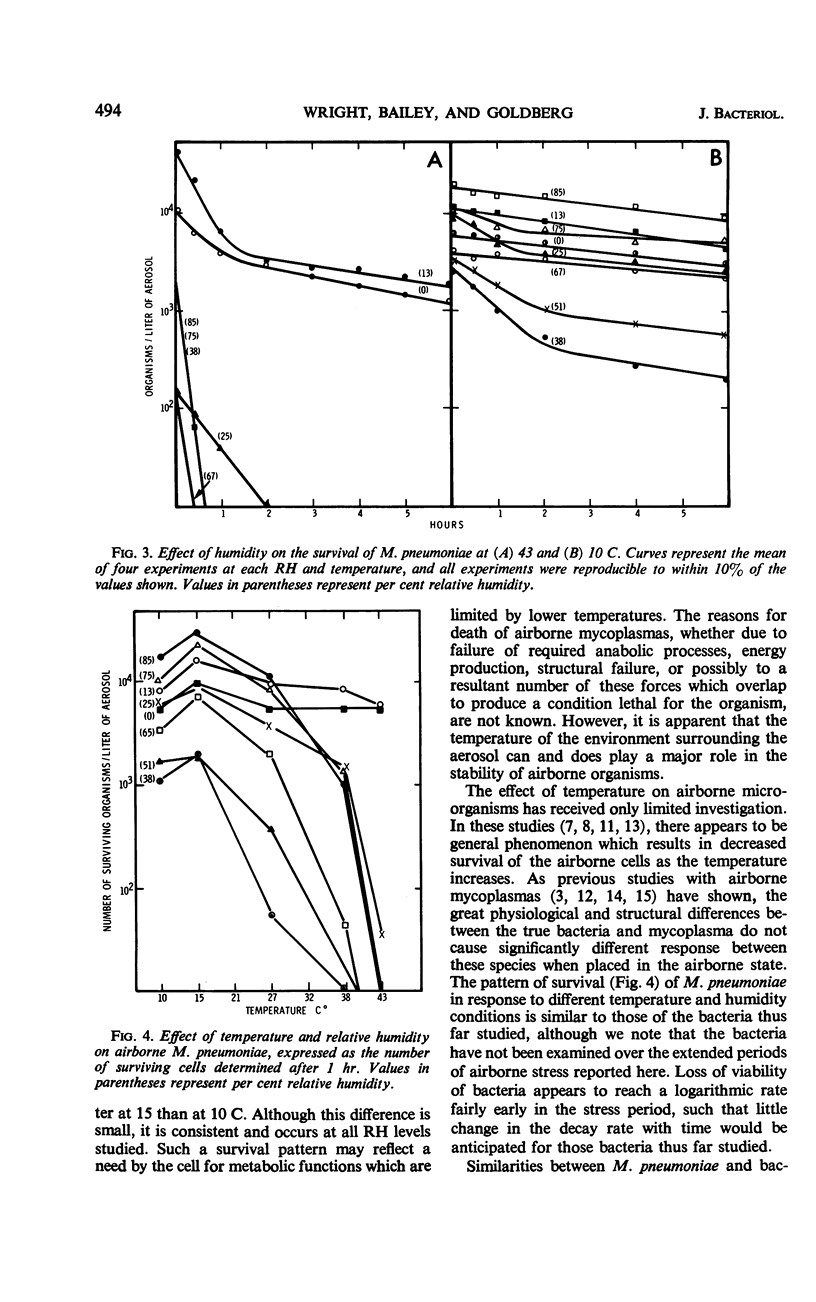
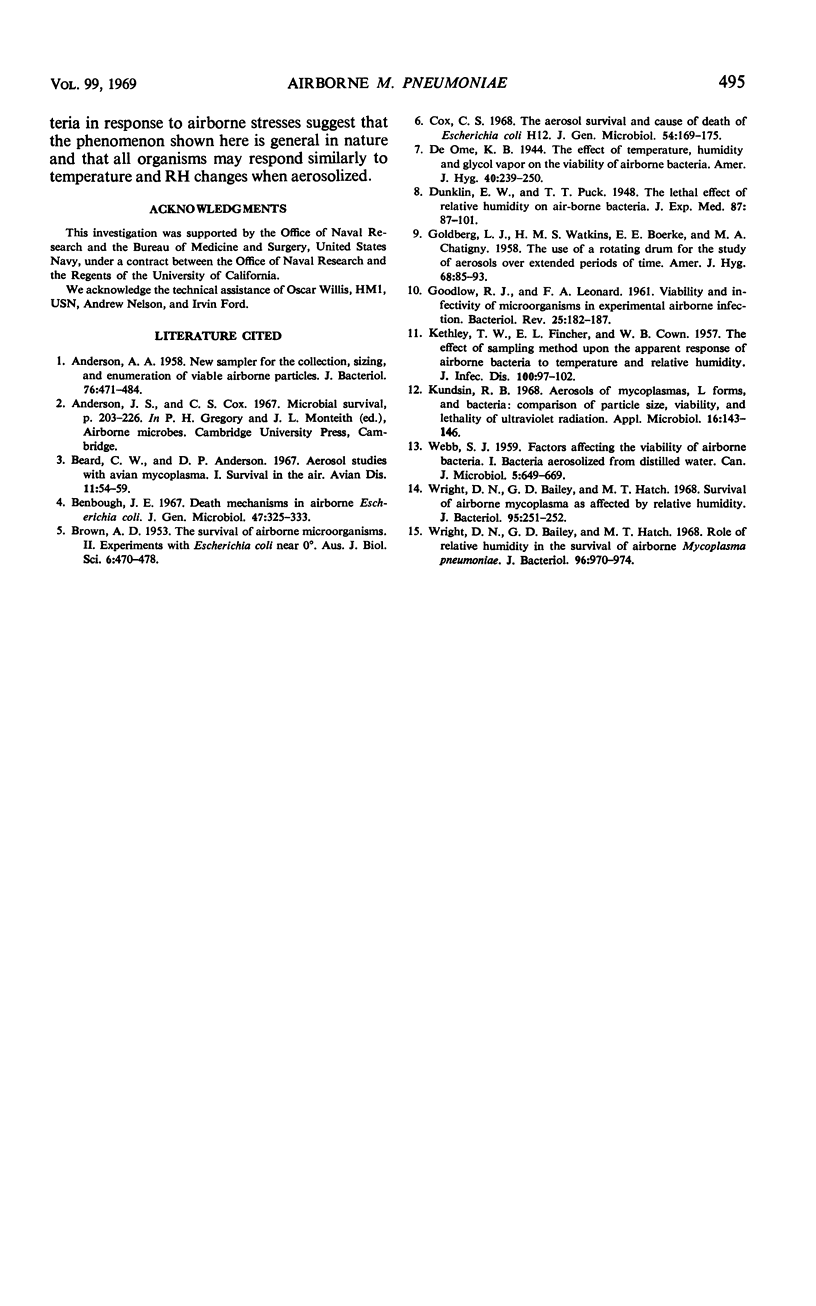
Selected References
These references are in PubMed. This may not be the complete list of references from this article.
- ANDERSEN A. A. New sampler for the collection, sizing, and enumeration of viable airborne particles. J Bacteriol. 1958 Nov;76(5):471–484. doi: 10.1128/jb.76.5.471-484.1958. [DOI] [PMC free article] [PubMed] [Google Scholar]
- BROWN A. D. The survival of airborne microorganisms. II. Experiments with Escherichia coli near 0 degrees C. Aust J Biol Sci. 1953 Aug;6(3):470–480. doi: 10.1071/bi9530470. [DOI] [PubMed] [Google Scholar]
- Beard C. W., Anderson D. P. Aerosol studies with avian mycoplasma. I. Survival in the air. Avian Dis. 1967 Feb;11(1):54–59. [PubMed] [Google Scholar]
- Benbough J. E. Death mechanisms in airborne Escherichia coli. J Gen Microbiol. 1967 Jun;47(3):325–333. doi: 10.1099/00221287-47-3-325. [DOI] [PubMed] [Google Scholar]
- Cox C. S. The aerosol survival and cause of death of Escherichia coli K12. J Gen Microbiol. 1968 Dec;54(2):169–175. doi: 10.1099/00221287-54-2-169. [DOI] [PubMed] [Google Scholar]
- GOLDBERG L. J., WATKINS H. M., BOERKE E. E., CHATIGNY M. A. The use of a rotating drum for the study of aerosols over extended periods of time. Am J Hyg. 1958 Jul;68(1):85–93. doi: 10.1093/oxfordjournals.aje.a119954. [DOI] [PubMed] [Google Scholar]
- GOODLOW R. J., LEONARD F. A. Viability and infectivity of microorganisms in experimental airborne infection. Bacteriol Rev. 1961 Sep;25:182–187. doi: 10.1128/br.25.3.182-187.1961. [DOI] [PMC free article] [PubMed] [Google Scholar]
- KETHLEY T. W., FINCHER E. L., COWN W. B. The effect of sampling method upon the apparent response of airborne bacteria to temperature and relative humidity. J Infect Dis. 1957 Jan-Feb;100(1):97–102. doi: 10.1093/infdis/100.1.97. [DOI] [PubMed] [Google Scholar]
- Kundsin R. B. Aerosols of mycoplasmas, L forms, and bacteria: comparison of particle size, viability, and lethality of ultraviolet radiation. Appl Microbiol. 1968 Jan;16(1):143–146. doi: 10.1128/am.16.1.143-146.1968. [DOI] [PMC free article] [PubMed] [Google Scholar]
- Wright D. N., Bailey G. D., Hatch M. T. Role of relative humidity in the survival of airborne Mycoplasma pneumoniae. J Bacteriol. 1968 Oct;96(4):970–974. doi: 10.1128/jb.96.4.970-974.1968. [DOI] [PMC free article] [PubMed] [Google Scholar]
- Wright D. N., Bailey G. D., Hatch M. T. Survival of airborne Mycoplasma as affected by relative humidity. J Bacteriol. 1968 Jan;95(1):251–252. doi: 10.1128/jb.95.1.251-252.1968. [DOI] [PMC free article] [PubMed] [Google Scholar]


